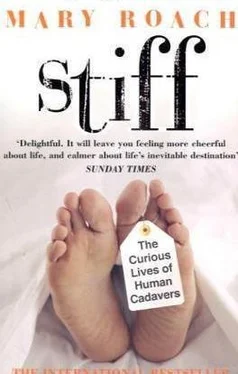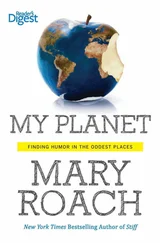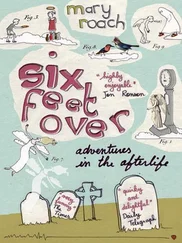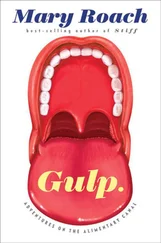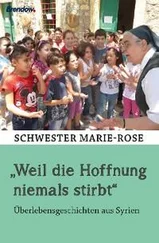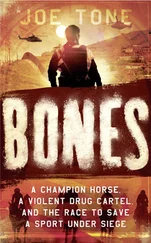Curt added that young people in Sweden had recently begun moving away from cremation because of the pollution it creates. “Now the young can go to Grandma and say, ‘I have a new way for you—a cold bath!’”
Then he laughed and clapped his hands. I decided that this was the sort of man I wanted running my funeral.
Wiigh-Masak joined us. “You are a very good salesman,” the man in the gray suit told her. He works for Fonus, Scandinavia’s largest mortuary corporation. The man let Wiigh-Masak take in the compliment before stepping on it: “But you haven’t convinced me.”
Wiigh-Masak didn’t flinch. “I expected to get some resistance,” she told him. “That’s why I’m so surprised and pleased to see that almost everyone in the audience looks happy while I talk.”
“Believe me, they’re not,” said the man pleasantly. If I didn’t have an interpreter, I’d think they were discussing the pastries. “I hear what they say.”
On the drive back to Lyrön, the man in the gray suit became known as The Slime.
“I hope we don’t see him tomorrow,” Wiigh-Masak said to me. At three o’clock the following afternoon, in Stockholm, she was scheduled to give a presentation before the top regional managers of Fonus. That she was speaking there was a matter of some pride. Two years ago, they hadn’t returned her phone calls. This time it was they who called her.
Susanne Wiigh-Masak does not own a business suit. She delivers her presentations in what American dress code arbiters would term “smart-casual” trousers and a sweater, with her waist-length, wheat-colored hair braided and pinned up in back. She wears no makeup for these talks, though her face tends to flush mildly, bestowing a youthful blush.
In the past, the organic look has worked in Wiigh-Masak’s favor. When she met with Church of Sweden clergy back in 1999, they were comforted by Wiigh-Masak’s noncommercial mien. “They said to me, ‘You are really not a seller,’” she tells me as she dresses for the trip to Fonus’s Stockholm headquarters. She really isn’t. While as 51 percent owner of Promessa’s shares Wiigh-Masak stands to earn a substantial sum should the process take off, wealth is clearly not her motive. Wiigh-Masak has been a hard-core ecologist since the age of seventeen. This is a woman who takes trains instead of driving, to make herself less of a burden on the environment, and who disapproves of holiday-makers flying to Thailand when a beach in Spain would suffice, on the grounds that jet fuel is needlessly burned. She readily admits that Promessa has little to do with death and everything to do with the environment, that it is essentially a vehicle for spreading the gospel of ecology. The dead bodies attract the media and public attention in a way that the environmental message alone could not. She is a rarity among social advocates: the environmentalist who is not preaching to the converted. Today is a good example: Ten mortuary company executives are about to sit through an hour-long talk about the importance of giving back to the earth through organic composting. How often does that happen?
The Fonus headquarters takes up the better part of the third floor of a nondescript Stockholm office building. The interior designers have gone out of their way to infuse color and nature into the surroundings. An arrangement of café tables is surrounded by a sort of indoor hedge of potted trees, in the midst of which stands an immaculate tropical fish tank the size of a plate-glass window. Death is nowhere in evidence. A bowl of complimentary lint brushes bearing the Fonus logo calls out to me from the receptionist’s desk.
Wiigh-Masak and I are introduced to Ulf Helsing, a vice director of the corporation. The name hits my ears as Elf Helsing, causing great internal merriment. Helsing is dressed like all the other elves in the lobby, in the same gray suit, with the same royal-blue dress shirt and the same subdued tie and silver Fonus lapel pin. I ask Helsing why Fonus instigated the meeting. As Wiigh-Masak envisions it, it is Sweden’s crematoria, until recently operated by the church, that would be doing the freeze-drying. The funeral homes would simply make the option known to their clients—or not, depending on what they decide. “We have been following this in the paper, but we kept a low profile,” came his enigmatic reply. “It is time we heard more.” Possibly contributing to the decision was the fact that 62 percent of three hundred visitors to the Fonus Web site answered, in a survey, that they would be interested in an ecological funeral.
“You know,” Helsing adds as he stirs his coffee, “that freeze-drying corpses is not a new idea. Someone in your country came up with this, about ten years ago.” He is talking about a retired science teacher from Eugene, Oregon, named Phillip Backman. Wiigh-Masak told me about him. Backman, like Tim Evans and the cremationists of yore, was inspired by a loathing of funerary pomp. He spent several years at Arlington National Cemetery arranging military funerals that, much of the time, no one showed up for. This, combined with a background in chemistry, got him interested in the possibilities of freeze-drying as another alternative to burial. He knew that liquid nitrogen, a waste product of certain industrial processes, is cheaper than natural gas. (Wiigh-Masak estimates the liquid nitrogen cost per body at $30; the gas for a cremation costs about $100.) To break down the frozen bodies—for freeze-drying a whole human body would take over a year—into tiny, quickly freeze-dryable pieces, he proposed running them through a machine. “It’s something on the order of what they do with chipped beef,” he told me when we spoke. (“It was a hammer mill ,” Wiigh-Masak later told me.) Backman managed to secure a patent for the process, but the concept was coolly received at local mortuaries. “No one wanted to talk about it, so I just let it go.”
The meeting begins on time. Ten regional directors for the company, along with their laptops and their polite gazes, gather in the conference room. Wiigh-Masak begins by talking about the difference between organic and inorganic remains, how cremains contain little nutritive value. “When we are burning remains, we don’t give it back to the earth.
We are built up from nature, and we have to give it back.” The audience seems respectfully quiet and attentive, except for my interpreter and me, whispering in the back row like poorly brought up schoolgirls. I notice Helsing writing. At first he appears to be taking notes, but then he folds the sheet in two, and, when Wiigh-Masak’s back is turned, slides it across the table, where it is passed along to its recipient, who slips it under his notebook until Wiigh-Masak turns away again.
They let Wiigh-Masak talk for twenty minutes before they begin asking questions. Helsing leads the pack. “I have an ethical question,” he says.
“An elk dying in the woods and returning to the earth is just lying on the ground. Here you are doing something to break it up.” Wiigh-Masak replies that in fact, an elk that dies in the woods is likely to be torn up and eaten by scavengers. And while it is true that the dung of whoever eats the elk would act as a sort of elk compost and, in effect, achieve the desired goal, it was not something she could envision families being comfortable with.
Helsing pinkens slightly. This was not where he intended things to go, conversationally. He persists: “But can you see the ethical problem of breaking it up this way?” Wiigh-Masak has heard this line of argument before. A technician at a Danish ultrasound company, whom she contacted early on in the project, declined to work with her for this reason. He felt that representing ultrasound as a nonviolent way of breaking up tissue was dishonest. Wiigh-Masak was undeterred. “Listen,” she said to the morticians. “We all know that taking a body down to powder requires some kind of energy. But ultrasound, at least, has a positive image. You cannot see the violence. I would like it to be possible for the family to watch it happening, behind a glass wall. I want something where I can show a child, and the child won’t start crying.”
Читать дальше
